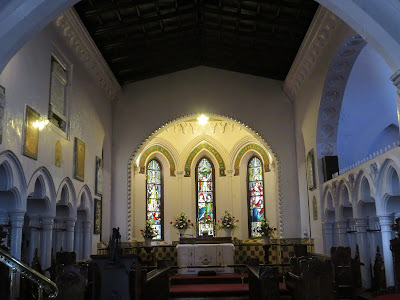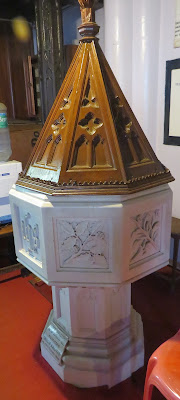St. Stephen's Church - Ooty
Udagamandalam, popularly known as Ooty, is a well-known tourist destination across the country. Thousands of tourists throng to the Queen of Hills to enjoy their holidays. No doubt! But, not even 5% of those tourists visit this beautiful 200 years old church with significant heritage value. Let me introduce you to this less frequented site of Ooty, known as St. Stephen's Church.
In the early 1800s, Ooty became almost like a summer capital for the Britishers of Madras presidency. Stephen Rumbold Lushington, the successor of Thomas Munro and the Governor of Madras, felt the need for a church in Ooty exclusively for the British and made arrangements to build the same. He laid the foundation for the church on 23rd April 1829.
With John James Underwood, the Captain of Madras Regiment, as the architect, the structure was constructed within one year. The extensive wooden work and Burma work ceiling would awe any visitor. All these timber were taken from Tipu Sultan's palace in Srirangapatna. It is said that the total budget for constructing the church was Rs. 24,000.
John Matthias Turner, the Bishop of Calcutta, consecrated the church on 5th November 1830. It was opened to the public on 3rd April 1831. The church came under the Church of South India (CSI) in 1947.
Located amidst the woods with the hills on the backdrop, the church's architecture from the outside resembles the other two churches from Madras, built almost in the same period - Santhome St. Thomas Church and Vepery St. Matthias Church. However, the interior is entirely different with extensive wooden works.
A unique feature of the church is that it does not have a bell. Instead, four hammer-like structures are tied on inverted V-shaped wooden planks on the tower. They produce sound when the wires are pulled from the ground floor.
A beautiful wooden staircase takes us to the chancel in a raised position. A fascinating baptismal font with a cover that was gifted in 1855 is found. The bishop's throne with an alluring marble base also belongs to the 1800s.
The stained glass panels are the major attractions of the church. At the center, there is a panel that depicts the crucifixion of Jesus Christ. The true right-side panel displays the resurrection of Jesus and the true left side panel displays the ascension of Jesus.
There are other panels in the church depicting various Bible scenes such as Jesus holding a lamb, Jacob's dream at Bethel, Mary holding the infant Jesus in her arms, Jesus healing Peter's mother-in-law, and Peter and John healing a lame man.
There are many marble and brass tablets erected in the memory of Britishers who mostly died in Ooty.
In the backyard, there is a cemetery having many tombstones of the 1800s and 1900s. Unfortunately, unlike the church, this is not appropriately maintained. If these tombstones are properly documented, there is a possibility to discover some unknown historical details.
Happy travelling.





















.JPG)
Comments
Post a Comment